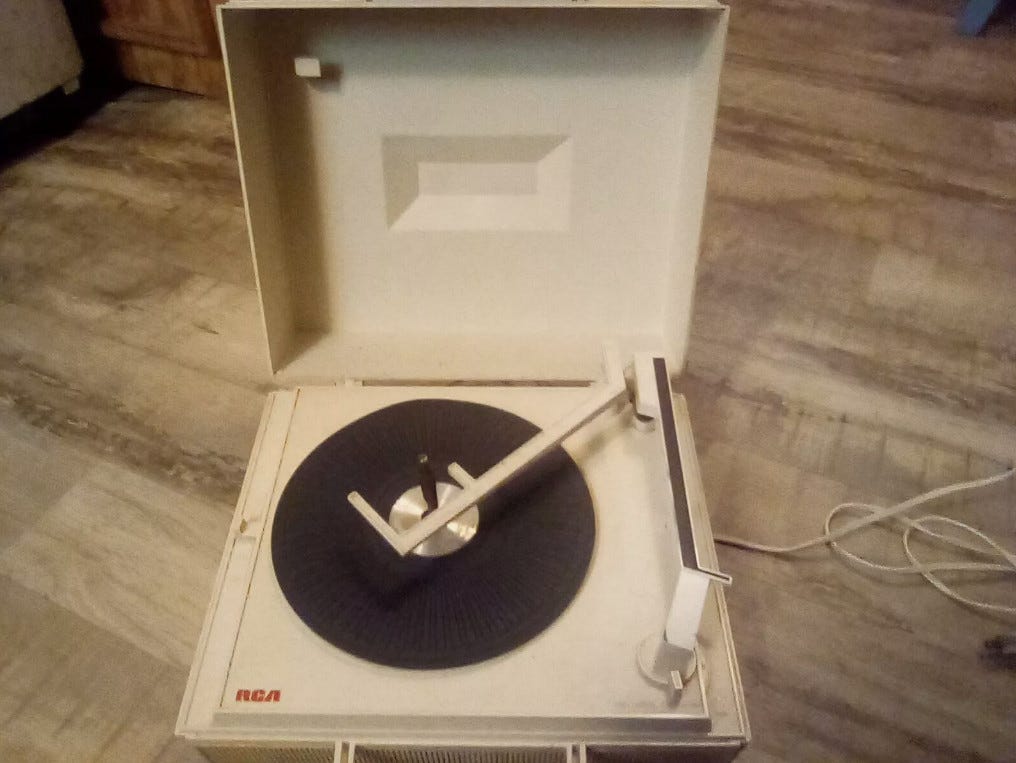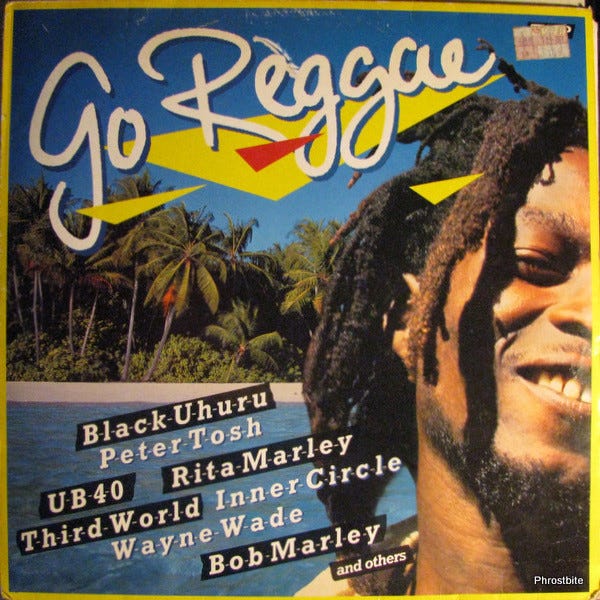I Miss My .45 Records
By Bruce White
Hey, can you hear me with those earbuds in? If you take them out for a second, I could tell you how we used to listen to music.
Long, long ago there was something called the .45 record. The .45 record was 7 inches in diameter, had a 1 ½ inch hole in the center for the spindle and had two sides. One side was called the A side which typically had the hit song on it. The other side was called the B side which typically had a throwaway song that no one listened to. Most people played .45 records on a small portable record player made by RCA. The player’s spindle could support a stack of up to ten records which would drop when the previous record was finished. The speaker had a small monaural speaker.
My first experience with the .45 record came at about age 3. My parents must have bought me an RCA 45 player and the record “Davy Crockett, King of the Wild Frontier.” I remember sitting in the living room at the bottom of the stairs listening to Fess Parker sing that over and over again. I played it so many times in a row that the record player began to smoke and died.
My next memory of the .45 record was at my older cousin Linda’s birthday party where the RCA was used to play the “Hokey Pokey” while we danced and played musical chairs. For anyone who doesn’t remember, musical chairs was a party game where there was one more person than chairs to sit in. The people would walk around the chairs in a circle with the music playing. When the music stopped (in this case by my Aunt Lucy lifting the needle arm off the record) everyone would try to grab a seat, but one person would be left standing. Then they would be out. One more chair would be removed and the process was repeated until there was only one person left, the winner.
When I was 10 years old, I got my cousin Linda’s hand-me-down RCA .45 player. But I needed records to play. My mother was a shopaholic and she would often take me with her on her shopping trips to department stores. In 1963, department stores had a little rack where the latest .45 singles would be displayed. I could choose what I liked. I thought I had rather sophisticated tastes for a 10 year old. My collection included “It’s My Party” by Leslie Gore, “Blue Bayou” by Roy Orbison and “Wonderful, Wonderful” by the Tymes. I even had Pat Boone’s “Moody River,” which is a morbid song in which Pat’s lover drowns herself in a river. How many thousands of times I listened to those songs is beyond me.
Of course, the Beatles US release of “I Want to Hold Your Hand” in January of 1964 changed all that. I first listened to this record on my friend Russell Kantner’s RCA .45 player. “I Saw Her Standing There” was the B side (in this case, the B side was not a throwaway). After that, Fess Parker, Leslie Gore, Roy Orbison and all the rest were out the window.
But the Beatles also ushered in the era of album rock.Everyone bought fancy turntables with fancy speakers designed for the stereo .33 ⅓ vinyl. And as the years went by we moved through 8 track tapes, tape cassettes, CDs and now digital wireless devices with earbuds.
But somewhere that RCA 45 player is getting to drop the next .45 on the turntable and I can’t wait to hear it. Yeah, yeah, yeah.
I Had That Record Player!
By Amy Sterling Casil
I had a small portable record player, the same type that Bruce describes, only I am a bit younger and the records I listened to were from the 70s. You can still find pictures that say “Do you know what this is?” for a .45 record adapter.
One of my favorite records was “ABC” by the Jackson 5. I played that one until it got gray and scratched. Soon I learned how to take care of my records. I also think I had the “Davy Crockett” record. And of course, it wasn’t a rock or pop hit, but “Once in Love With Amy” sung by Ray Bolger.
Albums were already becoming popular when I was a kid, but Woolworth’s still had big bins full of .45s. It was exciting to get a new record, take it home, and play it. We had many games of musical chairs, just like Bruce.
I used to love looking at the .45 record labels, and I tried not to break my .45 adapters, the plastic part that fit the .45 on the spindle. If you could stack up to 6 .45s to be played in a row, you needed 6 decent adapters.
By the time I got my record player, they already played .33 and .45 records. The numbers referred to how many times the record spun in a minute. There were also .78s, very old, heavy records. Bampy (my grandfather) had a radio and record player that played those.
It’s interesting how records have played a role in our lives. By the time I graduated from college, I was the “news girl” at our local university radio station, KUOR-FM. KUOR was a community radio station but was not well-supported by the University of Redlands. They had to raise all of their own funds–so the programming was a bit different than a lot of college stations, which at the time played almost all the kind of weird, underground music liked by college kids at the time.
KUOR did have some rock shows, but they also had shows for music that wasn’t played elsewhere in the area, like the Jazz show, Blues show, Soul/R&B, and my least favorite, the Reggae show.
There was one album we used to play and make fun of the guy on the cover who looked … well what are Rastafarians known for? Aside from their music?
By the time I was spinning records at the radio station, 12-inch EPs had taken the place of the .45 single. Clubbing, dancing–this was after the disco era!
“Scratching” had just started and that was the big no-no at the station, just like it should have been a big no-no back when we were playing our .45s on portable record players, just like Bruce did.
There’s a generational difference between Bruce and me, but not in the .45 record category. We both grew up playing singles on these small portable record players and it was the most fun ever.









